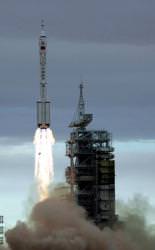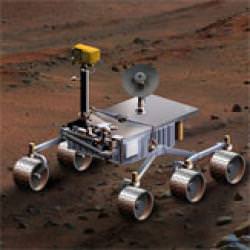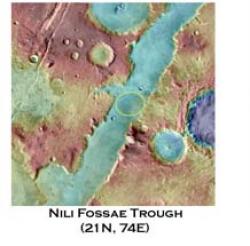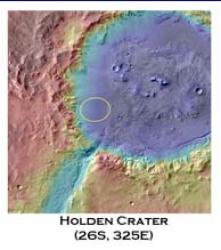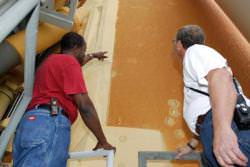NASA released the results on Dec. 31 from an $11.3 million federal air safety study. The agency previously withheld the report, and came under fire from Congress and news organizations for doing so. Earlier reports said NASA was concerned the data in the report would upset travelers and hurt airline profits. But today NASA administrator Mike Griffin and the head of NASA’s Office of Safety and Mission Assurance Bryan O’Connor said the release of the report was delayed to protect both pilot confidentiality and classified commercial aviation information.
“We came across instances in looking at the raw data where information was contained that could have compromised one of those two things,” said Administrator Griffin. “We determined that an independent review of that data was necessary in order to prevent such compromise.”
A panel led by O’Connor reviewed the 16,000 page report and data such as pilots’ names and other confidential information was redacted.
Also, Griffin said there are questions as to the validity of the data in the report, which has not been peer-reviewed.
“We consider the study was not properly organized and not properly reviewed, and that makes the results very difficult to interpret and to use,” he said. The study was conducted by the Battelle Memorial Institute for NASA.
An independent review of the data will be done in the future by the National Academy of Sciences.
Griffin said the original press release highlighting the refusal to release the data used “inappropriate language” to explain the rationale for not releasing the report.
NASA’s survey, the National Aviation Operations Monitoring System (NAOMS), interviewed about 8,000 pilots per year from 2001 until the end of 2004. The program was terminated before moving on to interview flight attendants and air traffic controllers, as originally proposed.
Approximately one million dollars a year was put into this study. Griffin said it is a small fraction of NASA’s overall work, and in retrospect, the study did not receive the attention that it should have.
The report can be found on NASA’s website. Its length makes it difficult to wade through the data. Additionally, some portions of the report that have not yet been edited for confidential information have been left out. NASA will release the remainder of the report as soon as possible.
The original plan for the survey never called for NASA to interpret and analyze the data. The study’s purpose was to develop new methodologies for collecting aviation safety data, and then the data would be transitioned to the aviation safety community.
“NASA conducts research, and this was one element of such research,” said Griffin. “NASA extended the research, which was originally to be concluded in 2004 in order to properly fund the transition of the data and its review. We’ve gone the extra mile with this data and we’ve gone well beyond our original intentions, which is why we’ve brought it to an end.”
It remains uncertain whether any data from the report will ever be used by the aviation safety community. Griffin said it was his understanding that the FAA has “simply moved on from NAOMS,� and that the FAA has over 150 different programs to provide survey data from individuals involved in all areas of air flight.
While NASA didn’t analyze the data, Griffin offered his opinion of what the report surmises: “What the flying public should understand is that they have approximately the same risk of dying from a lightning strike as they do dying from an air transport accident in the United States, which means to say that this is one of the safest forms of travel that human beings have ever invented, and that no one should think otherwise.”
In testimony to Congress earlier this year, Griffin characterized the data in the report as not as valid as he would prefer to have for a NASA report. Griffin said that he still feels that way, and that his concern is that this research work was not properly peer reviewed and the data that was extracted from the survey was not properly vailidated at its conclusion.
The survey purportedly unearthed approximately four times as many engine failures than the FAA has documentation for. “It calls into question the reporting mechanisms rather than the underlying rate of engine failures, which we believe we understand,� Griffin said, adding there are other inconsistencies, as well. “Those kinds of inconsistencies, when we looked at the data, gave us pause for thought, and still do.�
“The value of this will need to be determined by the larger aviation community, which I remind you, does not reside within NASA,” Griffin continued. “All that we at NASA have said is that this survey was not peer reviewed and the data was not validated at its conclusion. It’s up to others whether or not they believe this research has value.”
Griffin had promised to release the report before the end of 2007, and he did so without compromising confidential information that, by law, NASA is prohibited from releasing.
Griffin said this survey doesn’t cast any doubt in his mind about the safety of aviation in the United States. “I did not, having looked at a snapshot of the data, see anything that the flying public would care about or ought to care about,” he said. “But it’s not for me to prescribe what others may care about. We were asked to release the data and we did that.”
The report can be found on the NASA website.
Original News Source: NASA News Audio


